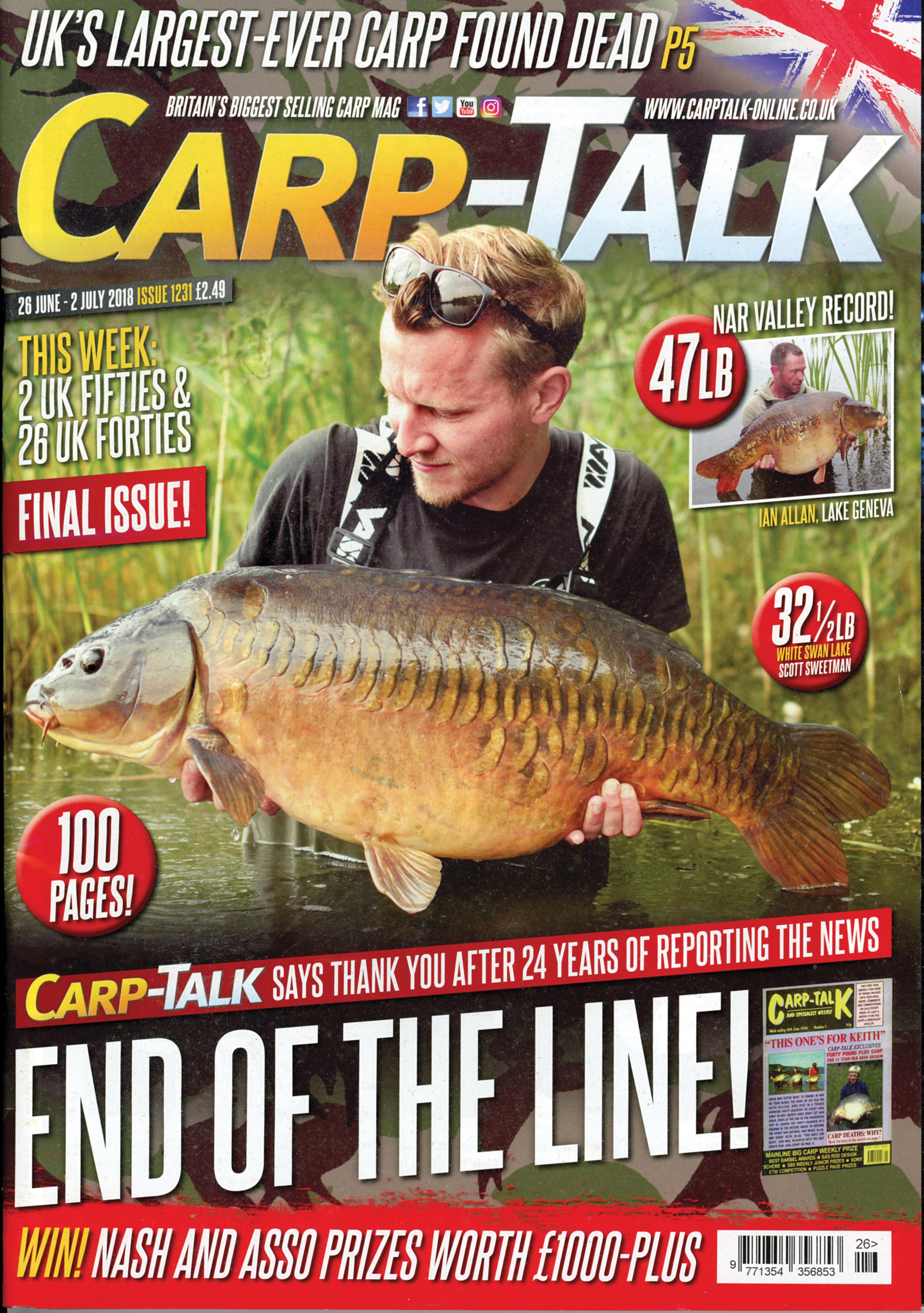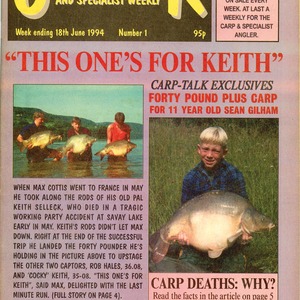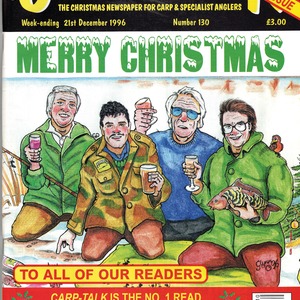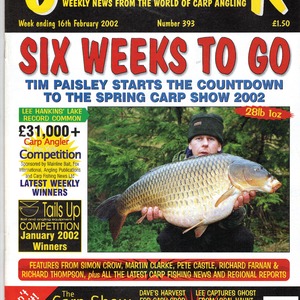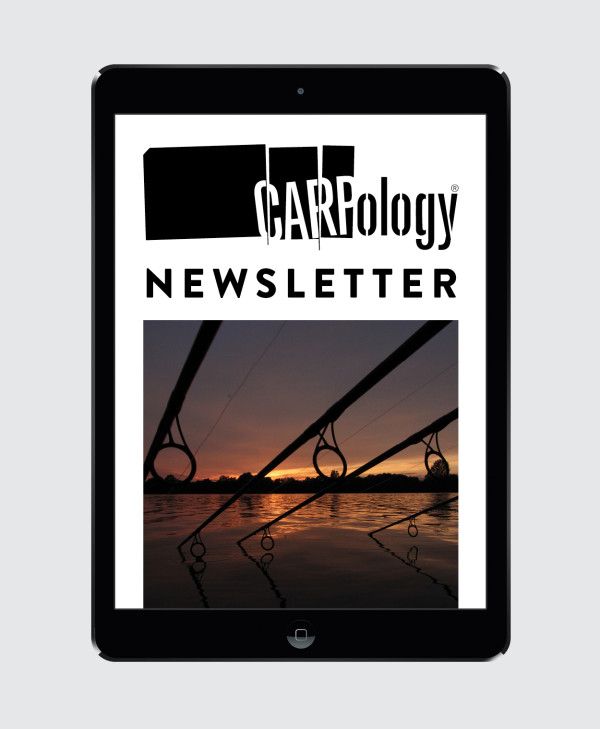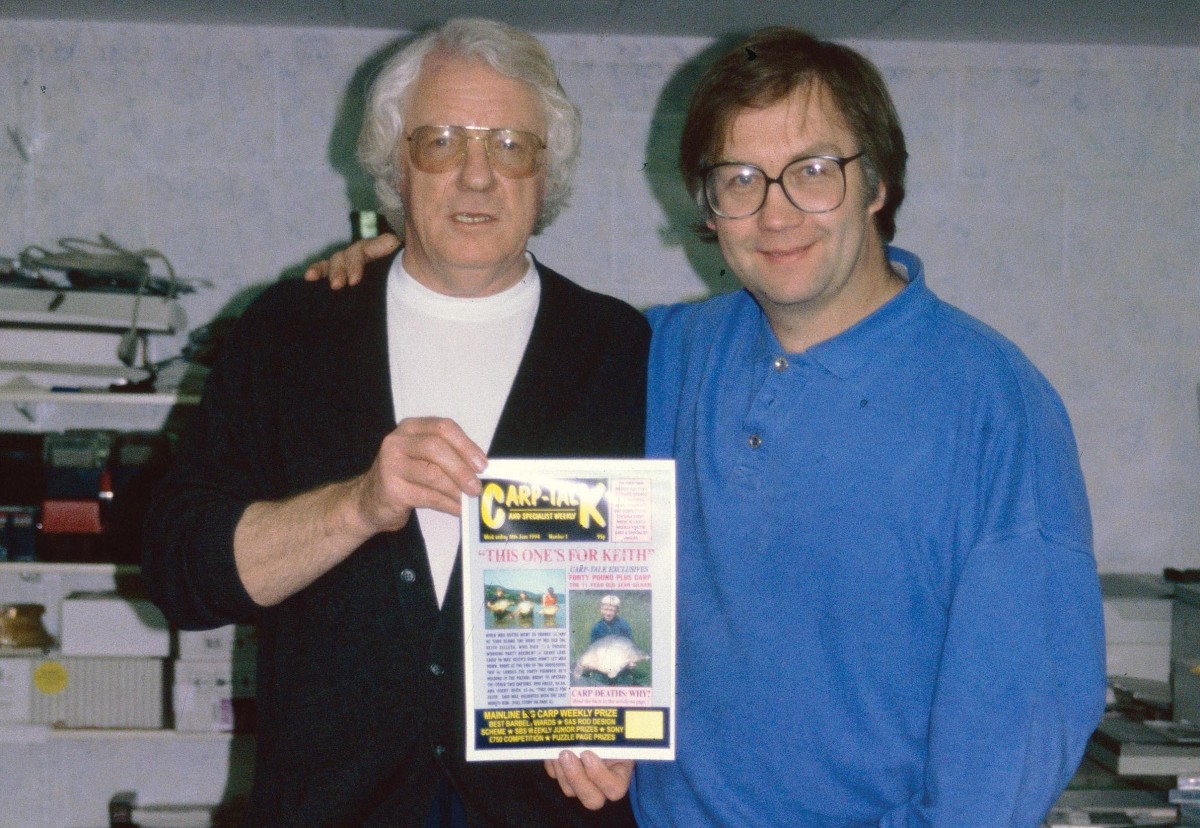
THE BIRTH AND LIFE OF CARP-TALK
Carp-Talk would have celebrated its 30th anniversary last June, so we reminisce about its beginnings and reflect on its legacy
Carp-Talk would have celebrated its 30th anniversary this June. For 24 years, this weekly publication had been a vital source of current catch reports and news for carp anglers nationwide. We caught up with Tim Paisley, one of the founding owners, to reminisce about Carp-Talk’s beginnings and reflect on its legacy.
CARPOLOGY: We’re aware that you, along with the late Chris Ball and Kevin Clifford, founded Carp-Talk. However, we’re curious to know which one of you originally conceived the idea and when this momentous idea came to fruition.
TIM PAISLEY: “I’ve got to admit that the weekly was my idea. Having co-founded the Carp Society and Carp Fisher magazine in 1981 and been involved in the running of the Society through the eighties—and then launched Carpworld in 1988—I was well aware of the growth of carp-fishing that showed no sign of abating.
“Publications-wise, it became a question of where to from here?’ My late wife Mary was the business brain behind Angling Publications and when I suggested there might be support for a weekly carp publication she didn’t disagree, but felt it wasn’t something we could take on. But the idea wouldn’t go away, so we arranged a meeting with Chris Ball (sales and contacts), Kevin Clifford (computer wizardry and business brains—and, as it turned out—premises!) and Julian Cundiff, who I felt would have a stronger appeal to the younger end of the carp market compared to we old fogies (as we were even then!). The picture from that original meeting reflects Julian’s early involvement, but his responsible legal career meant he couldn’t commit to an ongoing involvement.
“Two further thoughts from the beginnings, after Kev, Chris and I agreed to give it a go: where would the weekly operate from, and what would its title be? Kevin had extensive, largely unused, outbuildings by way of former stables on his property, so they would, gradually, be converted to office premises. The offices were freezing-cold to start with! We would have liked Carp News for the title but that was part of the title of Tim Hodges’ short-lived carp magazine title, which was in the process of being swallowed up by the David Hall empire. At that time, my editorial column in Carpworld was ‘Carp Talk’, so I relinquished that heading and replaced it with ‘Carp Leader’.
“We needed a typesetter with a knowledge of carp fishing as back-up to the three father figures. Successful carp angler Paddy Webb was taking redundancy from the coal mines about that time, and Mary it was who suggested he might be a possibility. I think he had a career as a lecturer lined up, but it turned out he was computer-literate, had a command of the English language, and lived within striking distance at Gainsborough. He was up for it. He became the ‘fourth Beatle’, to coin a phrase, and, initially, the main figure in converting catch reports to news reports.”
CARPOLOGY: When exactly did Carp-Talk make its debut on newsstands? Can you recall if initial sales met your expectations?
TIM PAISLEY: “The weekly was launched in week-ending 14th June 1994. It was published on newsprint paper originally, quickly upgraded to art paper. There was still a close season then and we wanted the world of specialist and carp angling to be aware of the weekly’s existence as the season started. We had no idea what initial sales would be, and had to be guided by the distributors for a print figure. Editor Joe and his colleagues will understand that there is an ongoing ‘conflict’ between publishers and distributors. I’ll not talk figures but the initial print request had to be quickly readjusted in line with reality. Kevin’s business mind coped with all that admirably, although I think there was a period when he felt it might not work out.
“Once we got somewhere near to a realistic supply/demand formula, then it started to make sense. I tried to explain this publishing anomaly in last year’s Carp Memoir. The distributors take orders from the retailers, and you supply the distributor with the figure they request. I don’t know what the expectations are now, but when Carpworld started in 1988, a 65% sales figure was achievable if you fought your corner hard enough. The other 35% simply ‘disappeared’, and I always felt a degree of cynicism about the ‘returns’ (meaning non-returns) being based ‘on trust’. Within a few years, 50% became a more realistic sales target, but as I’ve been out of the sharp end of the publishing firing line for some years now, I’m out of touch with supply and demand. There is a huge wastage in the world of periodical publishing, which is an expensive waste when you are working with quality paper. However, without a distributor, you would have to go to the American system of selling magazines by subscription.
“Thinking back to Carpworld, a lot of our efforts were in trying to analyse actual sales figures region-by-region to channel the distribution to the most meaningful areas. I suppose we did a bit of pioneering carp-publication-wise, as initially, the distributors were as likely to over-promote a carp magazine in Scotland at the same level as key areas like the Home Counties.”
CARPOLOGY: Were you confident in Carp-Talk’s potential for success from the outset, or did you harbour some doubts?
TIM PAISLEY: “Publishing anything is high risk, and Carp-Talk started at a time when new computer-generated publications were making publishing far easier than it had been even when Carpworld started six years or so before. Carp-Talk was launched into a competitive arena! Chris still had a full-time job, Kevin had a business enterprise as back-up, and my livelihood was via Angling Publications, so if the weekly didn’t work out, it wasn’t the end of the world. But we wouldn’t have gone down that route if we hadn’t been at least hopeful that it would be a success.”
CARPOLOGY: Reflecting on those early years, can you recall the challenges and obstacles you faced?
TIM PAISLEY: “In a word, distribution! However good your product is, the marketing aspect is the toughest call, as it was in the early days of Carp-Talk. Kev Clifford coped with all that side of things admirably and the weekly rapidly became cost-effective, then profitable. Chris was working, and fishing, and did a great job with the advertising sales, the other life-blood of publications. My involvement was an editorial one.”
CARPOLOGY: Could you pull out three interesting facts/news reports from that first issue?!
TIM PAISLEY: “Until this question came up, I didn’t realise that I don’t have a copy of the first issue, or any of the early issues come to that! Initially, it was a specialist publication and reports of specimen fish were sought and included. But the support from the specimen community wasn’t great, and gradually, it became ‘carp only’. From memory, there were only a handful of catch reports in the first issue, but they soon escalated, as we anticipated they would, when word got out and the season started. The launch came soon after the Savay work-party tragedy when, tragically, four anglers were drowned, one of whom was Keith Selleck, proprietor of Middlesex Angling Centre. Max Cottis was very close to Keith, and he was the source of the main cover picture and story. The fish he is holding was caught on one of Keith’s rods.
“I grabbed a couple of days fishing on Birch Gove after the first issue and the first actual report I submitted was of Dave Treasure catching Scaley from the Mangrove. I’d never actually felt like a journalist until I submitted that report.”
CARPOLOGY: How much influence did you have over the magazine’s content, and direction?
TIM PAISLEY: “Very little influence is the answer. The content was largely self-generating, with catch reports going through the roof and articles canvassed for. The catch report forms that were made available were a big help. Catch reports, articles, competitions… That was the formula which worked very well throughout the life of the weekly. Publications can become the victims of their own success, as I think was the case with Carp-Talk. In the end it took too much generating week by week. I would think the internet was affecting sales, and somewhere down the line, it didn’t stack up.”
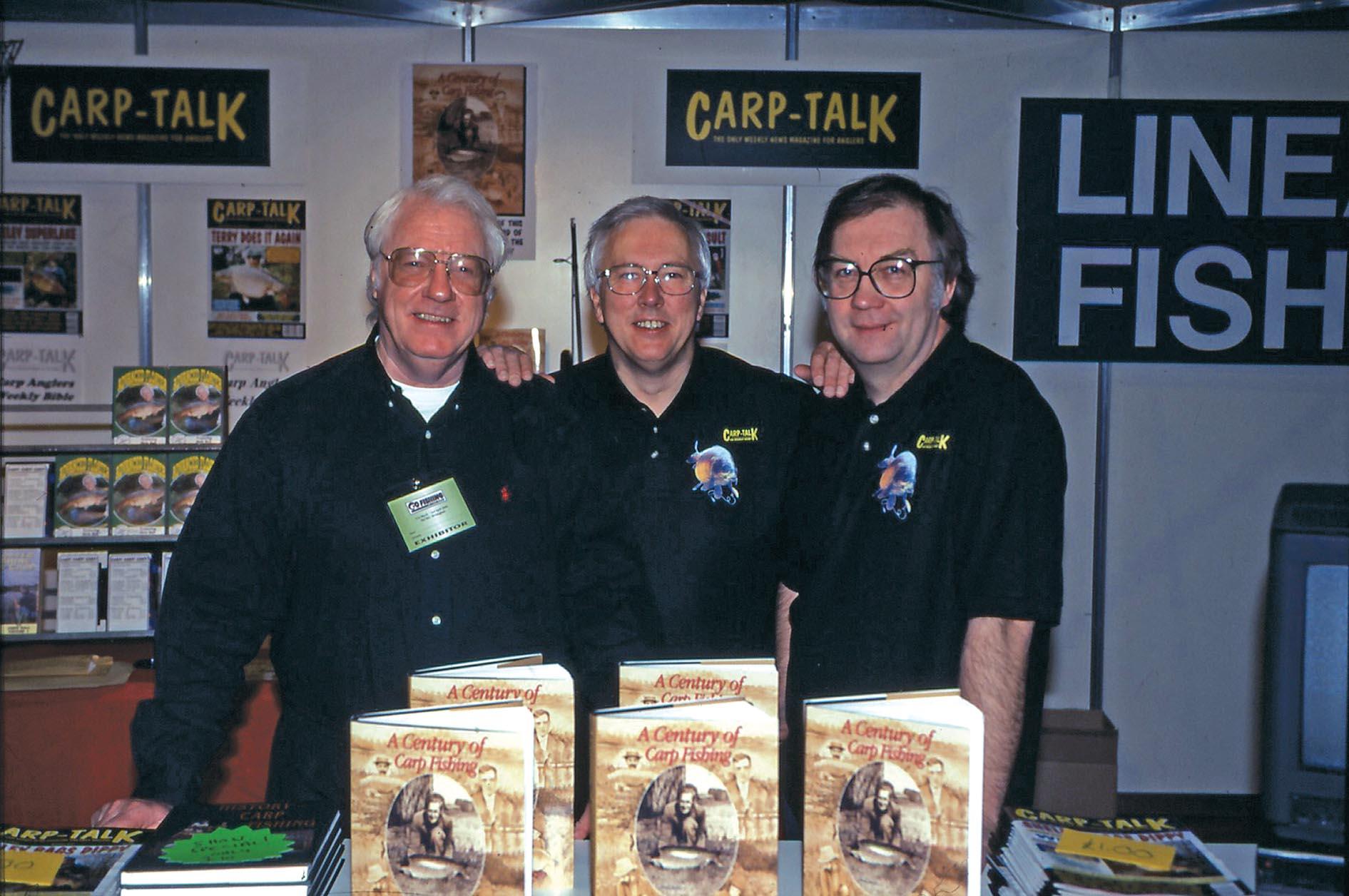
CARPOLOGY: In your opinion, when do you feel the magazine hit its peak, in terms of sales and the anglers who were in there, either with catch reports or articles? When did you first notice the impact of social media on catch reports, angler visibility (after all, the ‘names’ suddenly had their own platforms to promote their catches from), and overall magazine sales?
TIM PAISLEY: “I wasn’t part of the management structure from early this century, so I can’t really comment. As a continuing reader and occasional contributor with an editorial involvement, I doubt the support by the world of carp fishing for the weekly ever wavered. Carp-Talk was Joe Public’s carp publication. Writers get accustomed to seeing their name in print, but for someone to have their name and picture in print may be a once-in-a-lifetime experience—the highlight of their carp-fishing life. To appear on the cover was their ‘fifteen minutes of fame’ for many because for Carp-Talk, the size of the fish and quality of the picture were more important than the ‘star status’ of the captor.
“Publishers can relate to this, but readers will have to understand that the internet hit advertising revenue and sales, and there’s the problem. The production overheads are the same, and escalating, but the income is diminishing, so the sums no longer stack up. I don’t think the catch report and feature support from the world of carp fishing ever wavered.”
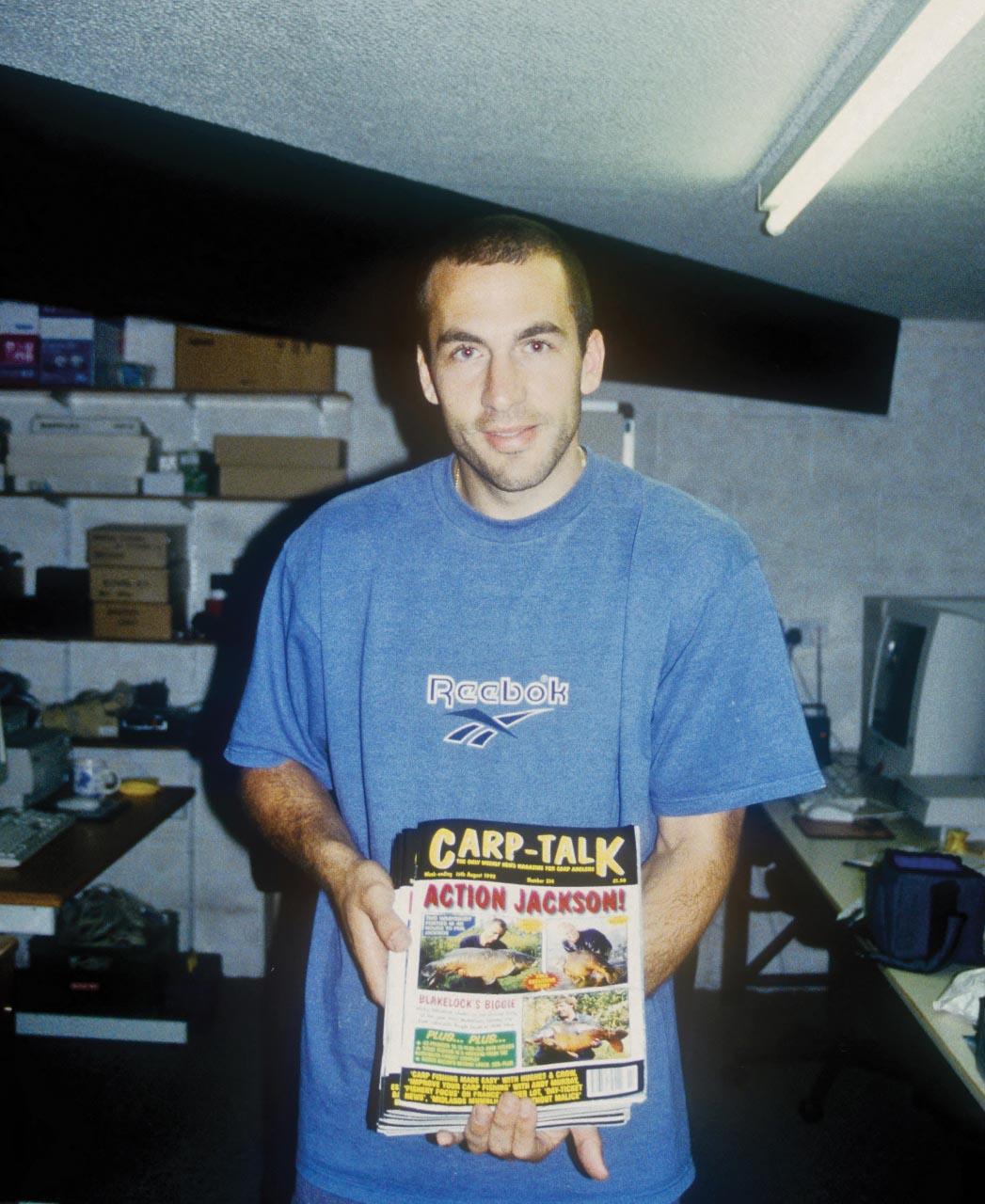
CARPOLOGY: The closure of Carp-Talk in June 2018 was a sombre moment for many in the carp fishing community. How did you personally feel about it at the time, and do you believe the carp world lost something irreplaceable with its departure? What aspect of Carp-Talk are you most proud of?
TIM PAISLEY: “I included a chapter about the creation of Carp-Talk in last year’s Memoir, and I closed the chapter thus:
‘In the fullness of time, Kev, Chris and I went our separate ways, and Kev’s offspring Mick and Bev took over the title’s running. It thrived for over twenty-four years until it felt the chill of the burgeoning internet competition and fell by the wayside. In a short period of time, it had become an institution, and unless the world of publishing changes dramatically, it will always have the distinction of being the first—and only—weekly carp publication in the world. It will almost certainly have the distinction of aspiring to the most editions published by a single carp title—1,231. By my reckoning, a monthly magazine would have to survive for over 100 years to match that statistic!’
“When I was compiling last year’s CARPology ‘Carp-Talk Retro’ series, it struck me just how big a loss the closure of Carp-Talk represented. The annual round-up of the year was a brilliant reference point for would-be archivists, and the sad loss of Chris Ball last year emphasised that loss. I inherited my archivist-bent—which I think Editor Joe recognises—from Kevin Clifford and Chris Ball, but unless Kev, or I, or a successor, scour the internet on a regular basis, there is no ongoing reference point for gathering grounds of material. If the purse strings run to it, a ‘Round Up of the Year’ in CARPology would be a starting point—but there’s a problem there, too. The compiler of the column needs a year’s warning because a year’s stats don’t come to you in a dream, or via inspiration, or even memories. They are hard facts that need compiling on an ongoing basis.
“For 24 years Carp-Talk was full of them, and they were succinctly summarised once a year! Follow that, you would-be archivists… Carp fishing past, present and future needs you.”
